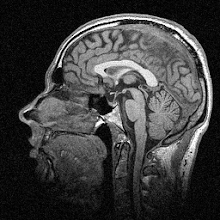The very basics: neurons ‘fire’ and send signals to one another in the form of action potentials, which can be recorded as ‘spikes’ in their voltage. So when a neuron fires, we call that a spike. The spiking activity of neurons has an inherent variability, i.e. neurons won’t always fire in the same situations each time, probably due to confounding inputs from metabolic and external inputs (like sensory information and movement). In other words, the signal is transmitted with some background ‘noise’. What’s kind of interesting about this paper (and others) is that variability in the neural system is starting to be thought of as part of the signal itself, rather than an inherently corrupting influence on it.
Today we delve back into the depths of neural recording with a study that investigates trial-to-trial variability during motor learning. That is: how does the variability of neurons change as learning progresses, and what can this tell us about the neural mechanisms? This paper gets a bit technical, so hang on to your hats.
One important measure used in the paper is something called the Fano Factor. The variability in neuronal spiking is dependent on the underlying spiking rate, i.e. as the amount of spiking increases, so does the variability; this is known as signal-dependent noise. This effect means that we can’t just look at the variability in the spiking activity – we actually have to modify it based on the average spiking activity. The Fano Factor (FF) does precisely this (you can check it out at the Wiki link above if you like). It’s basically just another way of saying ‘variability’ – I mention it only because it’s necessary to understand the results of the experiment!
Ok, enough rambling. What did the researchers do? They trained a couple of monkeys on a reaching task where they had to learn a 90° visual rotation, i.e. they had to learn to reach to the right to hit a target in front of them. While learning, their brain activity was recorded and the variability was analysed in two time periods: before the movement, termed ‘preparatory activity’ and during the movement onset, termed ‘movement-related activity’. Neurons were recorded from the primary motor cortex, which is responsible for sending motor commands to the muscles, and the supplementary motor area, which is a pre-motor area. In the figure below, you can see some results from motor cortex (Figure 2 A-C in the paper):
Neural variability and error over time
Panel B shows the learning rate of monkeys W (black) and X (grey) – as the task goes on, the error decreases, as expected. Note that monkey W is a faster learner than monkey X. Now look at panel A. You can see that in the preparatory time period (left) variability increases as the errors reduce for each monkey – it happens first in monkey W and then in monkey X. In the movement-related time period (right) there’s no increase in variability. Panel C just shows the overall difference in variability in motor cortex on the opposite (contralateral) side vs. the same (ipsilateral) side: the limb is controlled by the contralateral side, so it’s unsurprising that there’s more variability over there.
Another question the researchers asked was in which kinds of cells was the variability greatest? In primary motor cortex, cells tend to have a preferred direction – i.e. they will fire more when the monkey reaches to a target in that direction than in other directions. The figure below (Figure 5 in the paper) shows the results:
Variability with neural tuning
For both monkeys, it was only the directionally tuned cells that showed the increase in variability (panel A). You can see this even more clearly in panel B, where they aligned the monkeys’ learning phases to look at all the cells together. So it seems that it is primarily the cells that fire more in a particular direction that show the learning-related increase in variability. And panel C shows that it’s cells that have a preferred direction closest to the required movement direction that show the modulation.
(It’s worth noting that on the right of panels B and C is the spike count – the tuned cells have a higher spike count than the untuned cells, but the researchers show in further analyses that this isn’t the reason for the increased variability.)
I’ve only talked about primary motor cortex so far: what about the supplementary motor area? Briefly, the researchers found similar changes in variability, but even earlier in learning. In fact the supplementary motor area cells started showing the effect almost at the very beginning of learning.
Phew. What does this all mean? Well: the fact that there’s increased variability only in the pre-movement states, and only in the directionally tuned cells, suggests a ‘searching’ hypothesis – the system may be looking for the best possible network state before the movement, but only in the direction that’s important for the movement. So it appears to be a very local process that’s confined to cells interested in the direction the monkey has to move to complete the task. And further, this variability appears earlier in the supplementary motor area – consistent with the idea that this area precedes the motor cortex when it comes to changing its activity through learning.
This is really cool stuff. We’re starting to get an idea of how the inherent variability in the brain might actually be useful for learning rather than something that just gets in the way. The idea isn’t too much of a surprise to me; I suggest Read Montague’s excellent book for a primer on why the slow, noisy, imprecise brain is (paradoxically) very good at processing information.
--
Mandelblat-Cerf, Y., Paz, R., & Vaadia, E. (2009). Trial-to-Trial Variability of Single Cells in Motor Cortices Is Dynamically Modified during Visuomotor Adaptation Journal of Neuroscience, 29 (48), 15053-15062 DOI: 10.1523/JNEUROSCI.3011-09.2009
Images copyright © 2009 Society for Neuroscience









